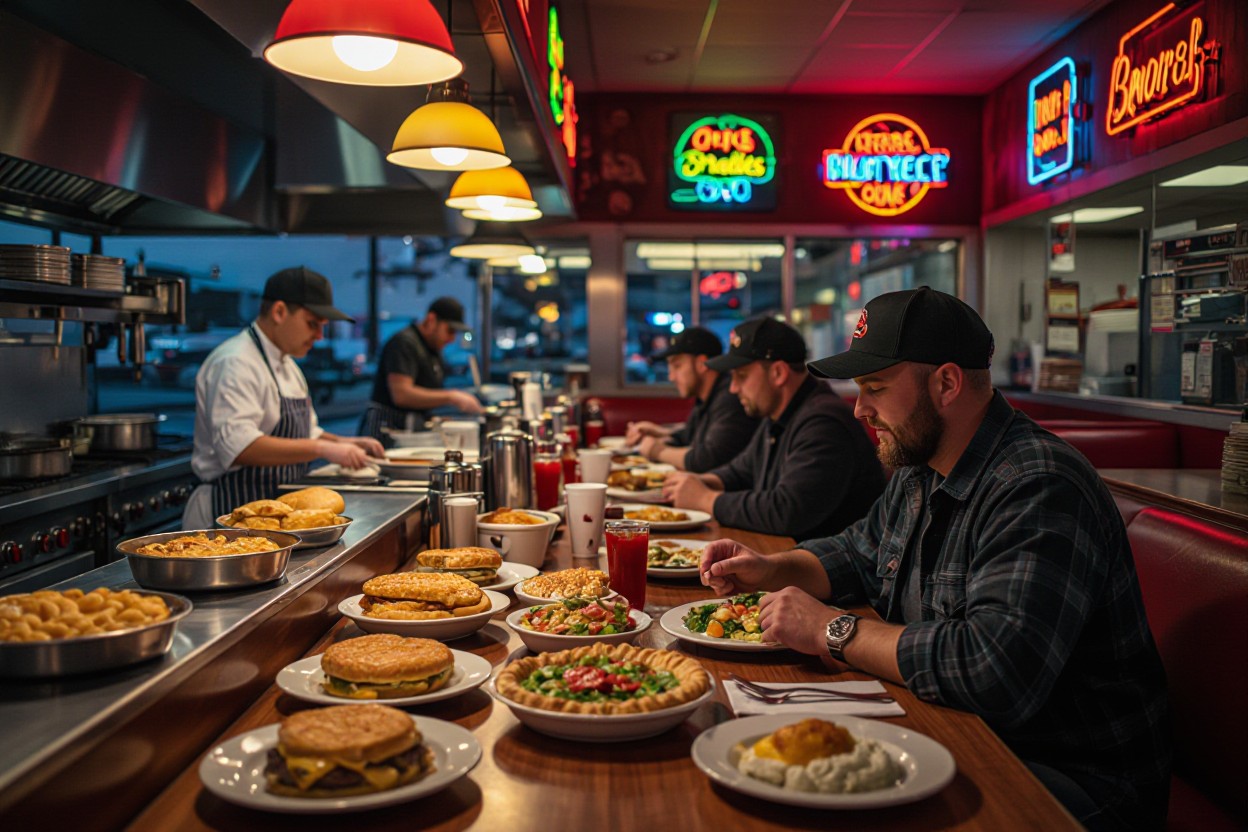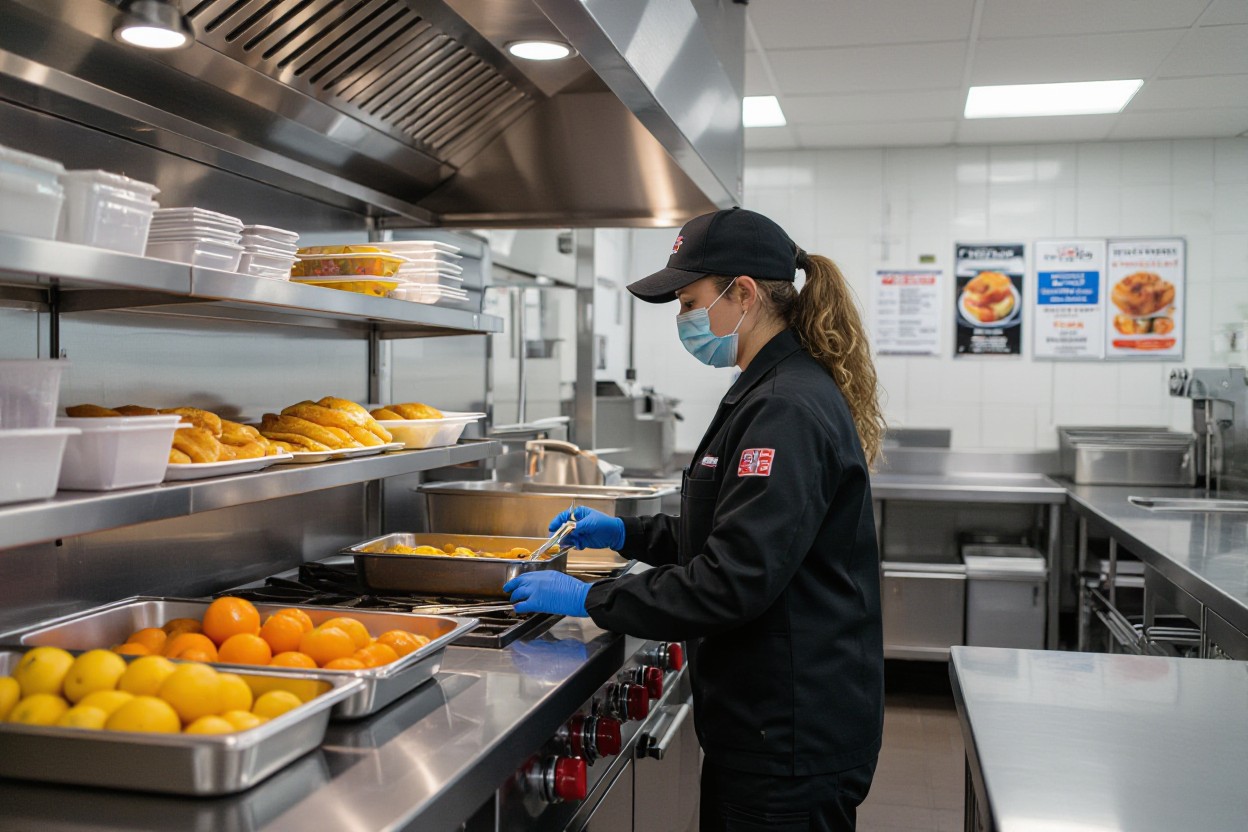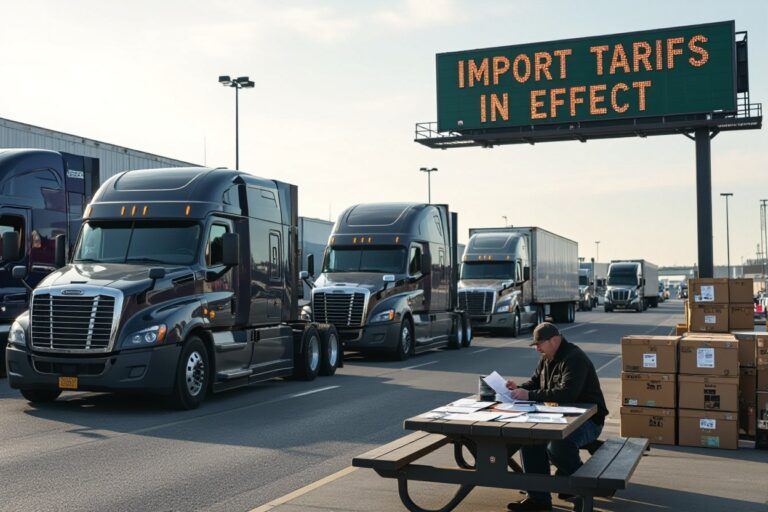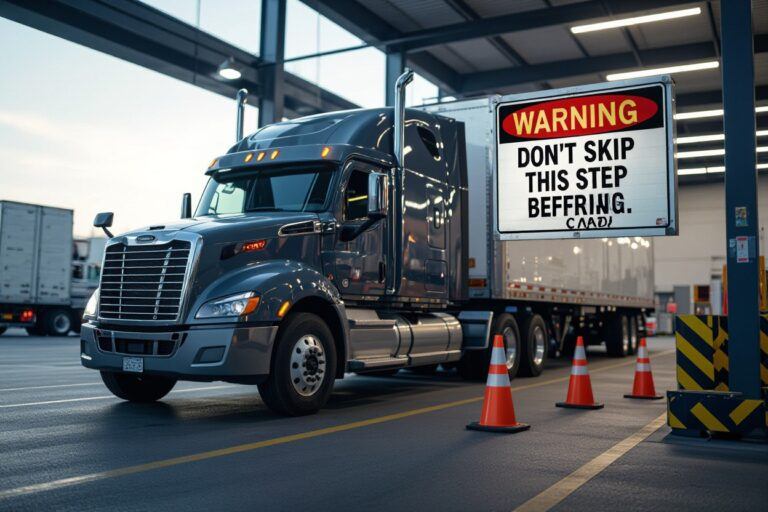
With long hours on the road, you rely on truck stop food more than you think; some options are high in sodium, preservatives and pose real health risks, while others offer surprisingly fresh, affordable, protein-rich choices. You’ll learn how to spot safer meals, read labels quickly, and use simple swaps to protect your health without sacrificing convenience.
Key Takeaways:
- Many truck stops serve fresh, made-to-order meals and regional specialties, not just prepacked or fried fare.
- Major truck-stop chains follow regular inspections and kitchen training, so food safety and consistency are often better than expected.
- They offer affordable, filling portions with growing options for healthier, vegetarian, and locally sourced dishes available around the clock.

The Culinary Landscape of Truck Stops
Major chains like Pilot Flying J and Love’s run hundreds of locations with on-site kitchens, while independents showcase true regional menus; you’ll find scratch-made breakfast skillets, commissary-roasted meats, and seasonal partnerships with local farms. Expect a mix: quick deli counters, full-service diners, and specialty booths serving items like Iowa pork tenderloin sandwiches or Gulf Coast shrimp platters. Note that fresh, made-to-order options coexist with high-sodium grab-and-go choices, so your selection often determines health and taste outcomes.
Regional Flavors and Unique Offerings
In the Midwest you can order a battered pork tenderloin; in Texas many stops offer smoked brisket or breakfast tacos; along the Gulf Coast you’ll see gumbo and po’boys, and in New England occasional lobster rolls. Independent truck stops often highlight local suppliers—cheeses from Wisconsin, apples from upstate New York—letting you sample authentic regional dishes without detouring from your route.
Quality vs. Convenience: A Comparative Analysis
Quick grab-and-go items typically cost $2–$5 and get you back on the road fast, while made-to-order plates average $8–$15 and take 8–15 minutes to prepare. You can choose a deli sandwich in under two minutes or wait for a grilled salmon plate; higher-quality meals usually mean fresher ingredients but longer stops and slightly higher prices, whereas convenience often brings processed ingredients and elevated sodium.
Choosing between speed and nutrition affects more than time: a typical made-to-order salad ranges 400–700 kcal, while fried sandwiches can exceed 900 kcal and 1,000+ mg sodium. If you prioritize energy and fewer additives, opt for scratch kitchens; if you need minimal downtime, target refrigerated high-protein snacks and fresh fruit when available.
Quality vs Convenience Comparison
| Quality | Convenience |
|---|---|
| Preparation: scratch kitchens, cooked-to-order | Preparation: prepackaged, microwaved, or fried |
| Typical Price: $8–$15 per meal | Typical Price: $2–$5 per item |
| Health Profile: fresher ingredients, lower additives | Health Profile: higher sodium, preservatives |
| Time: 8–20 minutes | Time: under 5 minutes |
| Examples: grilled chicken salad, roasted veggies | Examples: protein bars, microwaved sandwiches |
Health Implications of Truck Stop Dining
You confront a higher risk of cardiometabolic disease because of repeated reliance on high-calorie, high-sodium options; studies show long‑haul drivers have 65–75% prevalence of overweight or obesity and elevated rates of hypertension and diabetes. Frequent meals with >1,200 calories and >1,500 mg sodium, combined with long sedentary hours, amplify risk for heart disease and sleep apnea; small ordering and timing changes can lower damage.
Nutritional Myths and Realities
You can be misled by appearances: a salad with heavy dressing may top 800–1,200 calories, while a “grilled” platter can hide large portions of refined carbs. Restaurant entrees commonly contain 1,200–1,800 calories and 1,500+ mg sodium. Ask for dressings on the side, choose lean protein, and swap fries for veggies to cut hundreds of calories per meal.
The Impact of Travel on Eating Choices
Erratic schedules, loading docks, and limited dining windows push you toward quick, shelf-stable, or fried foods; grabbing a combo meal can add 500–1,000 extra calories versus a composed plate. Time pressure and fatigue make convenience trump nutrition, so you eat more often and choose items high in sugar, salt, and saturated fat.
Sleep disruption and irregular shifts alter hunger hormones—studies link night and rotating shifts to a 20–40% higher obesity risk—which increases cravings for carb-heavy, calorie-dense items. Practical steps like meal-prepping with a truck refrigerator, choosing smaller portions, and keeping protein-rich snacks on hand reduce impulsive fast-food stops and improve day-to-day glucose control.
The Economic Impact of Truck Stop Food
As you consider where drivers spend their downtime, note that truck-stop dining drives substantial local revenue: food sales increase non-fuel spend, boost convenience-store traffic, and keep drivers on the road longer. Chains and independents together funnel millions in payroll and sales tax into towns along freight corridors, while specialty menus can attract repeat customers and regional tourism, turning a single well-run stop into a consistent economic anchor for its county.
How Truck Stops Support Local Economies
You’ll find many truck stops hiring locally—mechanics, cooks, clerks—and sourcing produce, baked goods, or smoked meats from nearby suppliers. A large, full-service location often employs 50–200 people, plus contractors, and injects steady payroll and sales-tax dollars into rural communities. Local suppliers gain stable weekly orders, and businesses near highways benefit from spillover commerce when drivers park, eat, and shop.
Price Point Analysis: Value vs. Quality
You can compare options directly: grab-and-go snacks typically cost $2–6, fast-food equivalents run $5–9, while made-to-order plates at many truck-stop kitchens fall in the $8–15 range. Choosing a hot entree often gives you more protein and calories per dollar than packaged items, meaning you frequently get better nutritional bang for your buck when you prioritize prepared meals over impulse buys.
Operationally, truck stops balance margins: food and beverage margins commonly sit in the 20–40% range, far above the thin, single-digit margins on fuel, which lets operators invest in fresher ingredients and staff. You benefit when a stop focuses on quality—loyalty programs, daily specials, and regional dishes can pare your average meal cost while delivering better taste and nutrition than roadside vending alone.

Behind the Counter: Food Safety and Regulations
Local health departments inspect truck stop kitchens and registers against the FDA Food Code, so you can often find posted inspection scores or online records. Expect temperature control, cross-contamination prevention, and employee training to be checked; outbreaks traced to food service usually hinge on one failed control. Chains and independents alike must meet the same legal baseline, while larger operators often add corporate audits and supplier verification to raise standards.
The Standards for Truck Stop Food Preparedness
Most truck stops follow Hazard Analysis and Critical Control Points (HACCP)-style plans and require ServSafe or equivalent certification for managers. Hot hold temperatures should be at or above 135°F, cold-hold at or below 41°F, and reheating/poultry to 165°F. You’ll see date-marking, time-as-a-public-health-control limits (the FDA’s 4-hour rule), and surface sanitizing protocols—typically chlorine or quaternary ammonium solutions at regulated ppm levels.
Addressing Common Concerns Around Safety
Norovirus and Salmonella remain common causes of foodborne illness linked to improper hand hygiene and cross-contamination, so watch for bare-hand contact with ready-to-eat items. If raw proteins sit above salads in refrigerated cases or you notice inconsistent glove use, those are strong warnings. Many complaints stem from one breakdown—uncalibrated thermometers, missing date labels, or slow cold-hold recovery after a delivery.
Practical signs you can check: ask staff to verify food is held at 135°F (hot) or 41°F (cold), look for recent health inspection scores posted or online, and confirm date-marking on prepared foods. Chains often run quarterly internal audits and supplier testing, which is a positive indicator; if you see unwrapped utensils left in open bins or no visible handwashing sink with soap, treat that location with caution and consider another stop.
The Evolution of Truck Stop Cuisine
You’ve seen truck stops transform from grease‑scented diners to destinations where chefs and local suppliers shape menus; chains and independent stops now feature made‑to‑order plates, regional specialties, and healthier choices. Hundreds of travel centers nationwide partner with local farms and small producers to offer seasonal items—think Texas brisket platters or Pacific Northwest salmon bowls—while loyalty apps push specialty promos that drive repeat visits and higher average checks. This shift changes what you can expect on long hauls.
The Shift from Fast Food to Gourmet Options
You’ll spot scratch kitchens replacing frozen patties, with menu items priced between about $8–$18 for signature entrees and healthier sides like roasted vegetables or grain bowls. Several stops now feature local chef collaborations and regional staples—barbecue in the South, seafood near coasts—and you can get vegan, gluten‑free, and nutrient‑dense options alongside classic comfort food, narrowing the gap between truck stop and gastropub.
How Technology is Changing the Truck Stop Experience
You can use mobile apps to order ahead, pay contactless, and join rewards programs at major chains, cutting wait times and securing preferred menu items. Real‑time tools show parking availability and shower reservations, while digital menus and kitchen display systems speed orders; these tech layers make stops more predictable and efficient for your tight schedules.
Integrations with telematics and route‑planning services reroute you to stops with available parking and the amenities you need, and major players are adding EV charging and high‑speed Wi‑Fi to attract diverse drivers. Examples include apps that let you reserve a shower slot or prepay for a hot meal, which reduces idle time and helps you stay on delivery windows—a genuine time‑saving advantage on long routes.
Conclusion
Upon reflecting, you should recognize that truck stop food is not uniformly unhealthy or unsafe; with a discerning eye you can find freshly prepared meals, healthier choices, and trustworthy vendors. Use simple checks—cleanliness, ingredient transparency, and peak cooking times—and ask staff about preparation. Balancing convenience with smart selection and occasional indulgence lets you fuel your journey without sacrificing nutrition, taste, or food safety.
FAQ
Q: What is the real quality and safety of truck stop food?
A: Many truck stops operate like small restaurants and follow local health codes and regular inspections, so safety can be comparable to other eateries. Chains with centralized kitchens often have standardized procedures, while independent stops vary more by owner and staff training. Look for visible cleanliness in the dining area and kitchen line, hot foods held at proper temperatures, and staff using gloves or utensils for serving; if food smells off or has been sitting under heat lamps for hours, opt for something freshly prepared. Asking when an item was cooked or requesting a fresh batch is a simple way to reduce risk.
Q: Is truck stop food always unhealthy, or are there better choices?
A: Truck stop menus include many high-calorie, high-sodium comfort foods, but they also typically offer healthier options like grilled proteins, salads, fresh fruit, soups, and deli sandwiches you can customize. Portion sizes and preparation matter: choose grilled over fried, ask for dressings and sauces on the side, and swap fries for a side salad or steamed vegetables. Hydration and balance across the day help—pair a protein-rich entree with veggies and limit sugary beverages to keep energy steadier on long drives.
Q: How can I find the best truck stop meals and avoid low-quality options?
A: Use driver-focused apps and review sites to scout stops with high ratings and busy kitchens, since turnover often equals fresher food. Favor places with made-to-order counters over steam tables, visit during peak times when items are replenished, and ask staff what’s freshly prepared that day. Check for local specialties—many independent stops cook regionally inspired dishes better than chains—and follow recommendations from other drivers or social media groups for specific menu items and times to visit.



